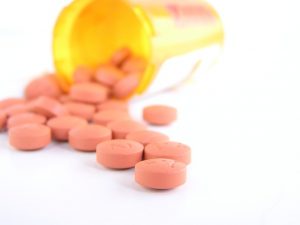If your child was born with a birth defect, it is likely that you knew something was wrong on that day your baby was born. The doctors and nurses were concerned but no one wanted to jump to any conclusions until they could determine what was wrong. Birth defects can range from minor to life-threatening. Some are largely cosmetic in nature, while others, tragically, mean a newborn will not live to leave the hospital.
Birth defects affect about one in every 33 babies born in the United States, and they are the nation’s leading cause of infant mortality.
Congenital defects — meaning those present at birth — have always occurred in humans and can be the result of unchangeable genetics. However, experts have recently been able to document factors that can increase the risk of having a child born with a defect, and these include things that are fixtures of modern life. Medicines, chemicals and environmental factors have all been linked to increased rates of birth defects.
According to the Centers for Disease Control and Prevention, birth defects are responsible for 139,000 hospital stays per year, costing nearly $2.6 billion.
What Causes Birth Defects?
In many instances, the cause of a baby’s birth defect is unknown. Babies with congenital defects can be born to parents who take every precaution to ensure the birth of a healthy child. But research has linked exposure to certain things during early development with an increased risk of birth defects. They include:
Pharmaceutical Drugs
 While some prescription medications are safe for an expecting mother to take, others have been shown to increase the risk of birth defects. Medication is responsible for an estimated 2% to 10% of all birth defects. For this reason, it is very important to speak with your doctor about all medication you take or intend to take during pregnancy. You cannot inquire too early. Some drugs, like certain anti-depressants, can increase the risk of birth defects even when taken before pregnancy. Drugs that have been linked to an increased risk of birth defects include:
While some prescription medications are safe for an expecting mother to take, others have been shown to increase the risk of birth defects. Medication is responsible for an estimated 2% to 10% of all birth defects. For this reason, it is very important to speak with your doctor about all medication you take or intend to take during pregnancy. You cannot inquire too early. Some drugs, like certain anti-depressants, can increase the risk of birth defects even when taken before pregnancy. Drugs that have been linked to an increased risk of birth defects include:
- Anticancer drugs
- Anticonvulsants
- Selective serotonin reuptake inhibitor anti-depressants (SSRIs)
- Analgesics (painkillers)
- Accutane and other acne drugs
- Lithium
- And more
Environmental Hazards
Chemicals and other industrial contaminants are thought to cause roughly 10% of all birth defects. Pregnant women can be exposed to these dangerous chemicals at home or at the workplace. They can be absorbed through the skin, inhaled or ingested through contamination of food or drinks. Employers are legally required to protect employees from these sorts of dangers, and government agencies are tasked with ensuring the air we breathe, water we drink and food we eat meet standards of safety.
Chemicals and minerals linked to increased birth defect risks include:
- Lead
- Mercury
- Pesticides
- Organic solvents
- PCBs
- And more
Infections
An infection during pregnancy can cause a fetus to develop a congenital defect. The following infections in pregnant women have been known to increase the risk of birth defects:
- Rubella
- Syphilis
- Encephalitis
- Parvovirus
- Toxoplasmosis
- Cytomegalovirus (CMV)
None of these infections will cause a birth defect for certain. The infection most likely to cause a birth defect, according to experts, is rubella. If the infection sets in early in the pregnancy, the risk of having a child with a birth defect is about 20%.
Diabetes
According to the CDC, it is imperative that a pregnant woman keep her blood sugar under control. Poorly maintained diabetes during pregnancy can increase the risk of birth defects and other health problems in the baby. It isn’t healthy for the mother, either.
Drug/Alcohol Use
Mothers can harm their unborn babies if they use drugs or alcohol while pregnant. Alcohol use can cause fetal alcohol syndrome, which results in a child having facial deformities and other problems. It is not curable. Illegal drugs are linked to a number of birth defects. Lastly, smoking while pregnant causes an increased risk of premature birth and certain birth defects, like a cleft lip or cleft palate.
What Are Common Types of Birth Defects?
Cardiovascular Defects
- Septal defects: A septal defect means there is a hole in the wall dividing the heart’s chambers. It can close on its own or require surgery. These defects are referred to as either atrial or septal, depending on which portion of the heart they affect.
- Hypoplastic Left Heart Syndrome (HLHS): In babies born with this defect, the left half of the heart does not develop properly in one or more ways. Surgery may be required to rebuild the deformed portion of the heart. It occurs once for every 4,344 births.
- Tetralogy of Fallot: This is a combination of four separate defects and is typically treated with surgery shortly after birth. One in every 2,518 babies is born with this condition.
- Transposition of the Great Arteries: This defect causes the two main arteries leaving the heart to be switched in position, causing serious blood-flow problems. It can be fatal if not corrected with surgery. It occurs once in every 3,333 births.
Nervous System Defects
- Anencephaly: Babies with this defect are born without portions of the brain and skull. They typically die shortly after birth. This condition occurs in 1 in every 4,859 births.
- Encephalocele: This defect results in a sac-like protrusion from a baby’s brain. It is often seen in conjunction with other defects. One of the rarest birth defects, it occurs in 1 of every 12,235 births, or about 341 instances per year.
- Spina bifida: This defect prevents the backbone from protecting the spinal column adequately, resulting in a protrusion of the spinal cord that can cause nerve damage. Spina bifida can cause mild to severe physical and intellectual disability. There are about 1,500 cases a year.
Muscular/Skeletal Defects
- Omphalocele: Babies with this defect develop with a portion of their intestines or other organs protruding from the belly button. It is corrected with one or more surgeries. It is present in about 775 babies born each year in the U.S.
- Gastroschisis: In this condition, the intestines stick out of the body through a hole beside the belly button. About 1,870 cases are reported each year.
Facial Defects
These include cleft lip and cleft palate. These defects, which affect speaking and eating and are correctable by surgery, can occur separately or together in a baby.
Limb Reduction Defects
This condition prevents all or part of a baby’s arm or leg from fully developing.
Birth Defect Statistics
- Serious birth defects affect 1 in every 33 births. This means a child is born with a birth defect every 4.5 minutes.
- Birth defects account for more than 20% of all infant deaths – more than any other cause.
- In 1996, the Food and Drug Administration mandated that folic acid, which has been shown to reduce the chance of nervous system defects like spina bifida and anencephaly, be added to grain products like bread and cereal. Four years later, the number of annual cases of spina bifida fell from 2,490 to 1,640, and anencephaly cases dropped from 1,640 to 1,380.
How Can Birth Defects Be Prevented?
If you are pregnant or plan on becoming pregnant, you should speak with your doctor about any and all medications and supplements you are taking or intend to take. Some of these may be putting your baby at risk. In general, try to keep healthy and don’t engage in behaviors that are obviously dangerous to an unborn child, like drinking alcohol, using illegal drugs or smoking.
There is one supplement you should take if you are pregnant or are planning to be. Folic acid, a B vitamin, has been shown to reduce the risk of neural tube defects, which affect the brain and spine. Doctors recommend 400 micrograms of folic acid daily, beginning a month before becoming pregnant and continuing through pregnancy.
Contact Our New York Birth Defect Lawyers
It can be a shocking and sad experience for parents when a child is born with a birth defect. Some may require a lifetime of medical treatments and frequent complications, beginning in your baby’s earliest days.
If your child was born with a birth defect, it is important that you learn about the condition. All defects are different. Many organizations exist to help parents of children born with birth defects.
If you believe your baby’s defect was because you took prescription medication during pregnancy, you probably didn’t know the medicine could harm your baby. That’s because many dangerous drugs do not have adequate warning labels, meaning that expecting mothers cannot make the most informed choice for their child’s health.
Likewise, people don’t intentionally expose themselves to dangerous chemicals. They are typically present in dangerous levels when a person, company or agency fails to adequately oversee safety standards, putting people like you at risk, and unborn babies as well.
Compensation may be available if a person or company is responsible for causing your baby’s birth defect. Pursuing legal action won’t undo your baby’s defect, but it can help cover the costs your family has had to bear and provide some compensation for the hardship you have endured.
To speak with the New York birth defect lawyers today about how to hold the responsible party accountable for what has happened, contact us.
